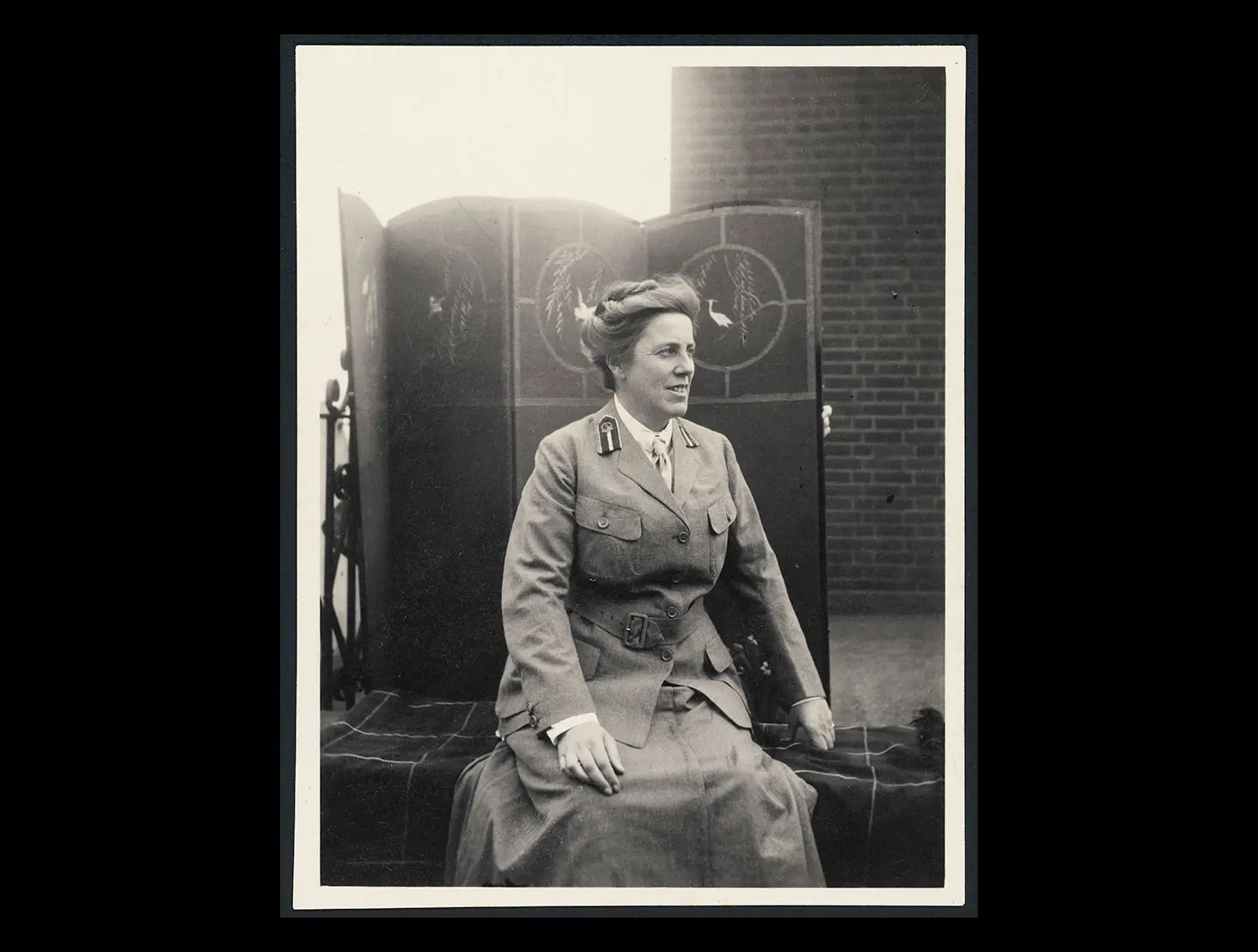Image credit: Agnes Bennett in army uniform, Macedonia, ca 1917. Photographer unknown. Ref: PAColl-6972-12-25-1 Alexander Turnbull Library.

Image credit: Agnes Bennett in army uniform, Macedonia, ca 1917. Photographer unknown. Ref: PAColl-6972-12-25-1 Alexander Turnbull Library.

Throughout her life, Dr Agnes Bennett was not deterred by what society thought was right for women to do at the time. She even undertook overseas medical service in both world wars. Find out more by exploring our collections and curated resources.
Dr Agnes Bennett (1872–1960) arrived in Wellington from Australia in 1905 to take over Dr Isabella Watson’s Willis Street practice. She had qualified as a medical practitioner at Edinburgh University in 1899, but ran into opposition to women doctors when she returned home to Australia. New Zealand offered her an opportunity to become one of a small but growing number of women here in medical practice.
Along with her private practice, in 1908 Bennett became the medical officer at Wellington’s St Helens Maternity Hospital, where she furthered her interest in obstetrics. She was also appointed as physician to Wellington Hospital’s children’s ward in 1910. She developed her research on maternal and infant welfare, specifically lactation, into her PhD, which she obtained from Edinburgh University in 1911.
During the First World War, Bennett travelled overseas to offer her medical expertise to the armed forces. In 1915, she served with the New Zealand Medical Corps in Cairo for a year, then moved to Britain, where she took charge of a Scottish Women’s Hospitals medical unit. In 1916, the unit was deployed to Macedonia, where Bennett established a military hospital to assist Serbian allies in their fight against German forces.
The hospital, stationed near the front, saw many casualties, and the work was both challenging and confronting. Bennett earned respect from patients and colleagues alike, and when she had to resign because of severe malaria she was honoured for her service by both the Serbian government and the Serbian Red Cross. After further service on troopships and in Britain during the 1918 influenza epidemic, she returned to Wellington in 1920 to pick up her work where she had left off.
Although she retired from private practice in 1930, Bennett carried on with her work at St Helens until 1936. The processes she instituted there for reducing birth-related mortality became a model for the rest of the country. Her ‘retirement’ included further service in New Zealand and England during the Second World War.
Bennett was not one to be deterred by preconceived gender roles in her professional or personal life. From being the first woman in Wellington to own and drive her own car, to establishing military hospitals and influencing birth practices, she not only challenged expectations in male-dominated professions but also pioneered new possibilities for women in New Zealand healthcare. Bennett’s collection came to the Turnbull Library as a bequest in 1963.
Story written by: Audrey Waugh
Copyright: Turnbull Endowment Trust
Explore the Alexander Turnbull Library collections further:
Topic Explorer has New Zealand and the First World War.
Many Answers has:
Want to share, print or reuse one of our images? Read the guidelines for reusing Alexander Turnbull Library images.
Tikanga ā-iwi:
Te whakaritenga pāpori me te ahurea
Te ao hurihuri.
Te Takanga o Te Wā (ngā hītori o Aotearoa):
Whanaungatanga.
Social sciences concepts:
Identity, culture, and organisation
Continuity and change.
Aotearoa New Zealand’s histories:
Colonisation and its consequences
The exercise of power
Relationships and connections between people.